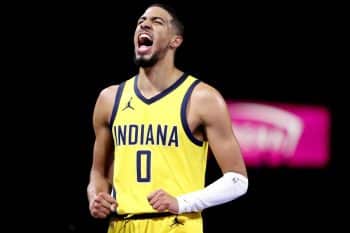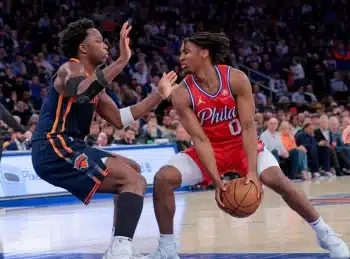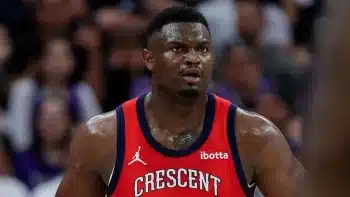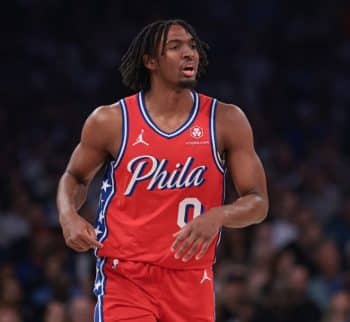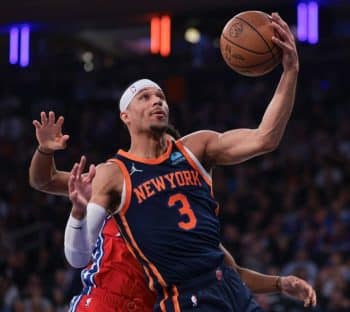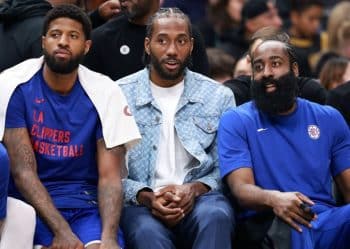NBA
NBA AM: Signing Free Agents Won’t Be Easy

The Problem With Free Agency
The NBA’s latest salary cap projections for the 2016-17 season peg the salary cap at $92 million, up from $70 million this season. That massive 28 percent increase in the cap is going to create a windfall in free agency that has fans and executives drooling over the possibilities. Some teams could have more than two maximum-salary slots and room to spare. The possibilities are compelling. The combinations are endless.
However, there is the possible and then there is the probable.
As of today, there is currently $1.612 billion in guaranteed contracts next season. If every option is exercised, that number swells to $1.977 billion.
So for the sake of discussions, let’s just focus on the guaranteed money and 30 teams with a salary cap line of $92 million. That works out to $2.76 billion as a total cap, and $1.14 billion in cap space.
That’s not a typo – teams will be $1.14 billion under the salary cap.
So here comes the problem: there will be more than $1.1 billion to spend, and only 269 free agents who logged time in the NBA this season to spend it on.
That sounds like a lot, until you back out all the guys who made less than $1 million last season – also known as the end of the roster or minimum-salaried guys. There were 125 players playing for under $1 million this season who will be free agents in July, leaving 144 players not making the minimum.
The top of that list includes Kobe Bryant (retiring), LeBron James, Kevin Durant, Dwight Howard, Dwyane Wade, Roy Hibbert, Eric Gordon, Chandler Parsons, Al Jefferson, Joakim Noah, Nicolas Batum, Nene, Al Horford, Amir Johnson, Luol Deng, DeMar DeRozan, Jeff Green, Mike Conley, Rajon Rondo, Lance Stephenson, Ryan Anderson… is the list getting a little underwhelming yet?
Being generous, there are about 35-40 players in the 2016 free agent class who are really top-level guys, and everyone is going to have salary cap space to pursue them.
In a normal year, there are four or five teams with serious money and players can sort of start decide where they want to be based on the known factor of who has cash. When 24 teams have cash, it’s hard to project – on both sides.
In talking with NBA executives from teams with sizable cash, there is not a sense of which players they have a real shot at because so many teams have money. Teams that are used to getting to the front of the free agent line on a meeting are unsure they’ll get a chance at all this year.
Some teams have big plans for free agency, but are very aware they may come out of the first week of July with no one of substance.
One executive joked that it’s great to have all this money, but who can you really spend it on that is going to change your franchise? The truth is there are about 20 franchise-changers and many of them may stay right where they are because their current teams have the same ability to pay them as anyone else and they get larger annual raises staying where they are. Those same teams will get the benefit of another 20 percent cap jump in 2016-17, so even giving out a maximum deal is not the deterrent it once was – even for an aging player or a player not exactly viewed as a maximum guy.
It has been joked that after the first week of free agency, some teams are going to panic a little and start overpaying guys rather than missing out and having to creatively spend all this money to meet the NBA salary cap floor that’s projected to be just over $82 million.
The analogy going around is that the second week of July will be like the lights at a night club coming on; you better find someone to go home with because the party may soon be over.
While meeting the minimum salary “floor” does not carry a huge penalty or disincentive, the NBA is going to fall short of what they agreed to pay the players in their agreed total revenue split this season and will have to write the Players’ Association a $93 million check. The NBA has cautioned teams that projections for 2016-17 could swell that number to over $375 million, which comes out of each team’s pocket, more so if they do not meet the minimum salary “floor.”
Like it or not, NBA teams have to spend this cap money, even if it’s not on a top-level player.
As much as fans want to apply a “worth” statement to some players, actual worth will play very little role in how this summer will play out. Money will talk, and there is more than $1 billion of it to be spent.
It’s great to say ‘who will my team sign?’ The truth is with 24 teams having a very equal playing field financially, not everyone is going to get a top-20 free agent. And with more than eight NBA teams having two maximum slots, there is a chance a team like the Lakers could get two high-level guys – meaning that’s one less guy for another team.
The problem with the 2016 NBA free agent class is that there are more high-paying chairs than players you can really put in them. So either you put a lesser talent in the higher priced chair or you go home with an empty chair.
That’s the problem a number of teams are going to face. For the players, most of them are preparing to see their value driven way up by demand.
The End Of The Road For Houston
Mercifully, the Houston Rockets season is over. What started as the promise of an elite run to the postseason devolved into a mess of a team and, worse yet, the collapse of a plan.
The Rockets believed that a core of James Harden and Dwight Howard would be enough to run deep into the playoffs this year and set the franchise up for a one-player-away pitch in free agency. Instead, they will enter the offseason looking to completely rebuild and may not be as appealing to the top flight free agents as they hoped they would be back in October.
There are some realities. Howard is likely gone. He and Harden have soured on each other to the point of no repair. The Rockets have watched Howard decline in the performance department and no longer view him as a building block. The young Clint Capela has logged a more productive season. Some of the Rockets’ most productive lineups included Capela, not Howard. It’s one of the reasons the Rockets entertained trading Howard at the deadline, but they were unable to find a deal worth doing.
Rockets interim coach J.B. Bickerstaff will get a courtesy interview, but sources close to the situation say as much as J.B contributed to getting the Rockets into the playoffs, it was not enough to get him the job in a full-time way. Current ESPN broadcaster Jeff Van Gundy is believed to be the front-runner to replace him. Van Gundy will not come cheap, but he has a history in Houston and they still talk about Van Gundy’s time at the helm.
As for the rest of the roster, the Rockets currently have $45.59 million in guaranteed contracts. With the 2016-17 salary cap expected to come in north of $92 million, that gives Houston something in the neighborhood of $45.5 million to spend under the cap. If the Rockets try to off-load the contracts of Trevor Ariza ($7.8 million) and/or Corey Brewer ($7.6 million), they can open up a lot more space in a “you can bring a friend” pitch to would-be free agents.
The Rockets had hoped this would be a magical season. But for anyone that watched all season, the truth is that it was anything but special.
The Rockets plan to aggressively re-tool and, outside of moving James Harden and possibly Patrick Beverley, everything seems to be on the table.
More Twitter: Make sure you are following all of our guys on Twitter to ensure you are getting the very latest from our team: @stevekylerNBA, @AlexKennedyNBA, @LangGreene, @EricPincus, @joelbrigham, @SusanBible @TommyBeer, @MokeHamilton , @jblancartenba, @eric_saar and @CodyTaylorNBA .
